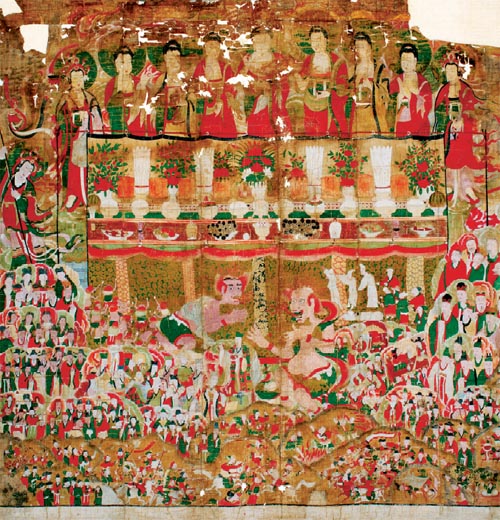A fiery banquet to tempt the ghosts

Period: Joseon, 1649
This painting illustrates the process in the Buddhist tradition of how humans are saved from hell.
The table of food in the center of the painting has been placed there to tempt the hungry ghosts who lurk in hell.
The ghosts symbolize the life of all sentient beings suffering from pain and misfortune. It is impossible for the ghosts to eat because their throats are as narrow as a needle.
If they attempt to eat, the food turns into fire and they suffer thirst as a punishment in addition to hunger.
The teachings of Buddha are represented by sweet dew and save the ghosts from pain.
The lower part of the painting depicts various ordeals and fears humans face in life. As represented in the painting, the biggest fear faced by humans in the Joseon Dynasty was sudden death, such as drowning, being killed in war or being eaten by a wild tiger. The upper part of the painting shows seven Buddhas saving ghosts with sweet dew.
The painting was created to reassure people in this life and make them aware of Buddha’s teachings so they can become better people in the next life.
*The photos and text for Treasure Trove are provided by the National Museum of Korea. For more information, call (02) 2077-9000 or visit www.museum.go.kr.










with the Korea JoongAng Daily
To write comments, please log in to one of the accounts.
Standards Board Policy (0/250자)